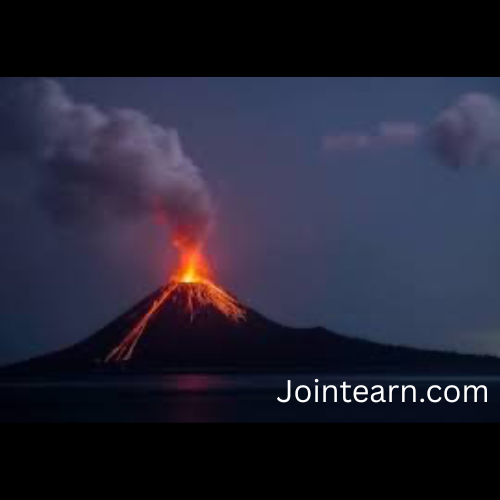Jakarta, November 20, 2025: Indonesian authorities successfully rescued more than 170 climbers and trekkers who were stranded following the sudden eruption of Mount Semeru, the highest volcano on Java island, in East Java province. The dramatic eruption on Wednesday sent searing clouds of hot ash, rock, lava, and volcanic gas cascading down the mountain slopes, prompting widespread evacuations and a heightened alert for residents living in nearby villages.
The group of 178 individuals included climbers, guides, porters, tourism officials, and tourists who had started their ascent of the 3,676-meter (12,060-foot) mountain in the Lumajang district. They became stranded at the Ranu Kumbolo camping area, a popular stop for hikers along the Semeru trail. Officials confirmed that all were safe and were being assisted in returning to lower elevations after the eruption triggered alarm among both climbers and local residents.
Priatin Hadi Wijaya, head of the Center for Volcanology and Geological Disaster Mitigation (PVMBG), addressed the media during a video news conference, emphasizing that Ranu Kumbolo is located outside the main danger zone, roughly eight kilometers (five miles) from the crater. While climbers were safe from immediate pyroclastic flows and lava avalanches, some may have been exposed to volcanic ash, which can pose respiratory hazards. Hetty Triastuty, another PVMBG official, confirmed that the northern slope camping site was not in the path of the south-southeast flowing hot clouds but underscored the importance of monitoring for ash exposure.
The eruption unfolded throughout Wednesday, producing a dramatic spectacle of volcanic activity. Mount Semeru released successive pyroclastic density currents that traveled up to 13 kilometers (eight miles) down its southern slopes. A towering column of hot clouds rose approximately two kilometers (1.2 miles) into the atmosphere. Indonesia’s Geological Agency chief, Muhammad Wafid, described the eruption as highly active, warning that ongoing seismicity indicates continued avalanches of incandescent volcanic material. Video footage captured from surrounding areas showed glowing rocks and clouds of ash sweeping through forested valleys and plantations, creating an eerie and hazardous environment.
Authorities have raised the volcano’s alert to its highest level. Wafid cautioned residents and visitors to avoid the Besuk Kobokan River valley, which lies directly in the path of the lava and pyroclastic flows. Officials are considering expanding the designated danger zone beyond the current eight-kilometer radius as the eruption continues to discharge volcanic material and searing gas down the slopes.
The eruption also prompted large-scale evacuations. Nearly 1,000 residents from three villages most at risk in the Lumajang district were relocated to government shelters. National Disaster Mitigation Agency spokesperson Abdul Muhari confirmed that, despite the intensity of the eruption, no casualties had been reported as of Thursday. Residents in nearby villages were forced to contend with thick layers of volcanic ash that blocked sunlight and created a heavy, gray haze across the landscape. Local media also reported that residents experienced a pungent sulfur odor in the air, and two motorcyclists suffered severe burns after accidents caused by hot ash on a bridge.
Mount Semeru, also called Mahameru, has a long history of eruptions. Over the past 200 years, it has erupted numerous times, often with devastating consequences for the communities living on its fertile slopes. The volcano’s last major eruption in December 2021 claimed 51 lives and injured hundreds more, as villages were buried under layers of mud and volcanic debris. That eruption forced the evacuation of more than 10,000 people, and authorities subsequently relocated nearly 3,000 houses out of the immediate danger zone. Despite these risks, thousands of people continue to reside on and near Semeru’s slopes, drawn by the fertile volcanic soil and the region’s agricultural opportunities.
Indonesia, an archipelagic nation of more than 280 million people, is located along the Pacific “Ring of Fire,” a horseshoe-shaped series of fault lines stretching across the Pacific Ocean basin. The country is home to 129 active volcanoes, making it one of the most geologically dynamic and disaster-prone regions in the world. The combination of dense population centers, fertile volcanic soils, and frequent seismic activity places millions at risk from earthquakes, tsunamis, and volcanic eruptions each year.
The recent eruption of Mount Semeru highlights both the beauty and danger of Indonesia’s volcanic landscapes. For climbers and tourists, the allure of exploring the slopes and witnessing spectacular geological phenomena must now be weighed against the ever-present risk of sudden eruptions and pyroclastic flows. Authorities have reiterated the importance of adhering to safety guidelines, maintaining awareness of evacuation routes, and respecting restricted areas during periods of high volcanic activity.
The rapid response by Indonesian authorities in rescuing the stranded climbers demonstrates the country’s growing capacity to manage natural disasters. Coordinated efforts between the Center for Volcanology and Geological Disaster Mitigation, local government agencies, and emergency response teams ensured that the climbers were evacuated safely from the Ranu Kumbolo camping site. These operations required both logistical planning and real-time monitoring of the volcano’s unpredictable activity.
Experts caution that Semeru’s eruption may continue in the coming days. PVMBG officials are closely monitoring seismic signals and lava flows to anticipate further hazards. The eruption serves as a stark reminder of the constant tension between human settlement, tourism, and natural geological processes in Indonesia. Scientists have emphasized the importance of preparedness and community awareness to minimize the loss of life and property in future events.
Videos and images circulating on social media depict the dramatic nature of the eruption: thick clouds of ash cascading down the slopes, incandescent rock plummeting through river valleys, and ash-covered farmland creating a surreal landscape. Residents have been advised to wear masks to protect against ash inhalation and to limit outdoor exposure until air quality improves. Authorities continue to distribute warnings through radio, social media, and local networks to ensure that vulnerable populations remain informed and safe.
The Mount Semeru eruption also highlights the broader challenges Indonesia faces in balancing disaster risk reduction with economic and tourism interests. The Lumajang district, like many regions in Indonesia, depends on tourism and agriculture for livelihoods. The eruption’s immediate impact on climbers, local businesses, and agricultural land underscores the need for comprehensive risk management strategies that protect both human life and economic activity.
As of Thursday, authorities remained vigilant, with teams stationed at critical points along the slopes, monitoring volcanic activity, and coordinating further evacuations if necessary. The successful rescue of over 170 climbers stands as a testament to Indonesia’s disaster management preparedness, though officials have cautioned that the threat from ongoing volcanic activity remains.
Mount Semeru’s eruption serves as both a dramatic natural event and a case study in effective emergency response. It demonstrates the necessity of timely evacuation, robust communication systems, and collaboration between local, regional, and national authorities in managing natural hazards. For residents, climbers, and tourists alike, the incident underscores the need for caution and respect for the unpredictable forces of nature.


Leave a Reply